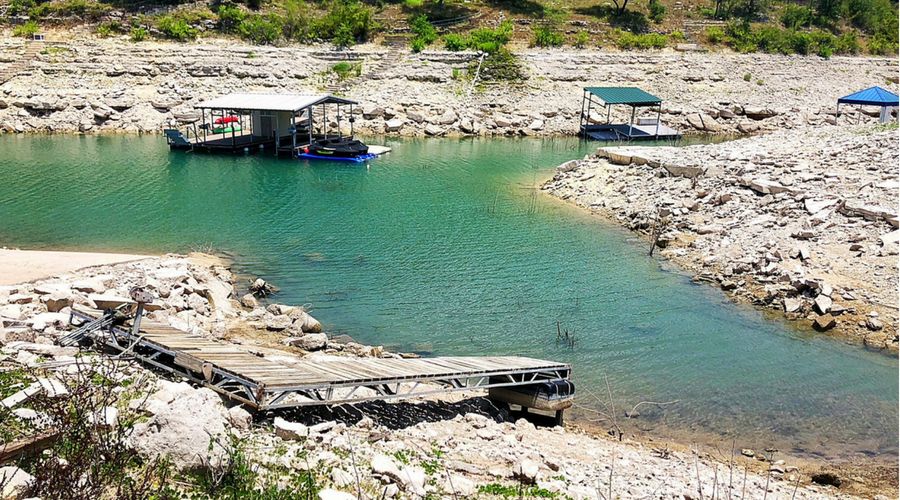With temperatures reaching a record-smashing 110 degrees on Monday, summertime in Texas is causing chaos. The state’s electrical grids are maxing out, animal shelters are in dire need of help, and the well-known Cavender’s Boot City sign (on Lamar Blvd.) burst into flames.
Closer to home, you have been watching our beloved Lake Travis disappear at a rapid rate (some of it due to evaporation). According to the LCRA, Lake Travis is currently 66% full (as of July 25, 2018). More alarming is the storage projection for Lake Travis through January 2019. Let’s say; it’s bleak.
With all of the revitalization of our lakeside businesses, it’s heartbreaking to think they may end up right back where they started before the rain came in 2015. And, of course, for everyone who lives around the lake and enjoys all of the recreational activities, watching the lake level drop once again is just plain sad.
Acres of water being released
What’s confusing to many of you is the releasing of water by the LCRA. According to an article in the Statesman, “So far this year, the LCRA has sent more than 44,000 acre-feet of stored water downstream. They plan to release another 55,000 acre-feet between August and October.”
The water releases are essential to keep rice farmers in business downstream, but what about our waterfront businesses?
Plus, Lake Travis is the drinking water for more than 1 million people, so the need for it goes beyond business and recreation.
How we got where we are today
We’re years beyond Texas Water Proposition 6 and the flawed 2010 Water Management Plan.
The water management plan that calls for the water releases in 2018 was established in 2015 by the Texas Commission on Environmental Quality, but the questions remain …
Are we able to make decisions about our regional water supply that are good for all involved?
And more importantly, are they appropriate with the conditions that we are in today?
Plans to reduce demands
According to the LCRA website, “In early calendar 2019, LCRA expects to begin operations at the Arbuckle Reservoir, the first new water supply reservoir in the lower Colorado River basin in decades. LCRA plans about $126 million in capital spending for water projects over the next five years.”
The Arbuckle Reservoir is intended to take pressure off the Highland Lakes, especially in drought conditions.
Will this new reservoir be vital for protecting water levels in Lake Travis and Lake Buchanan in 2019 and beyond?
Share your thoughts about the water management plan and how it might be improved on our Facebook page.
